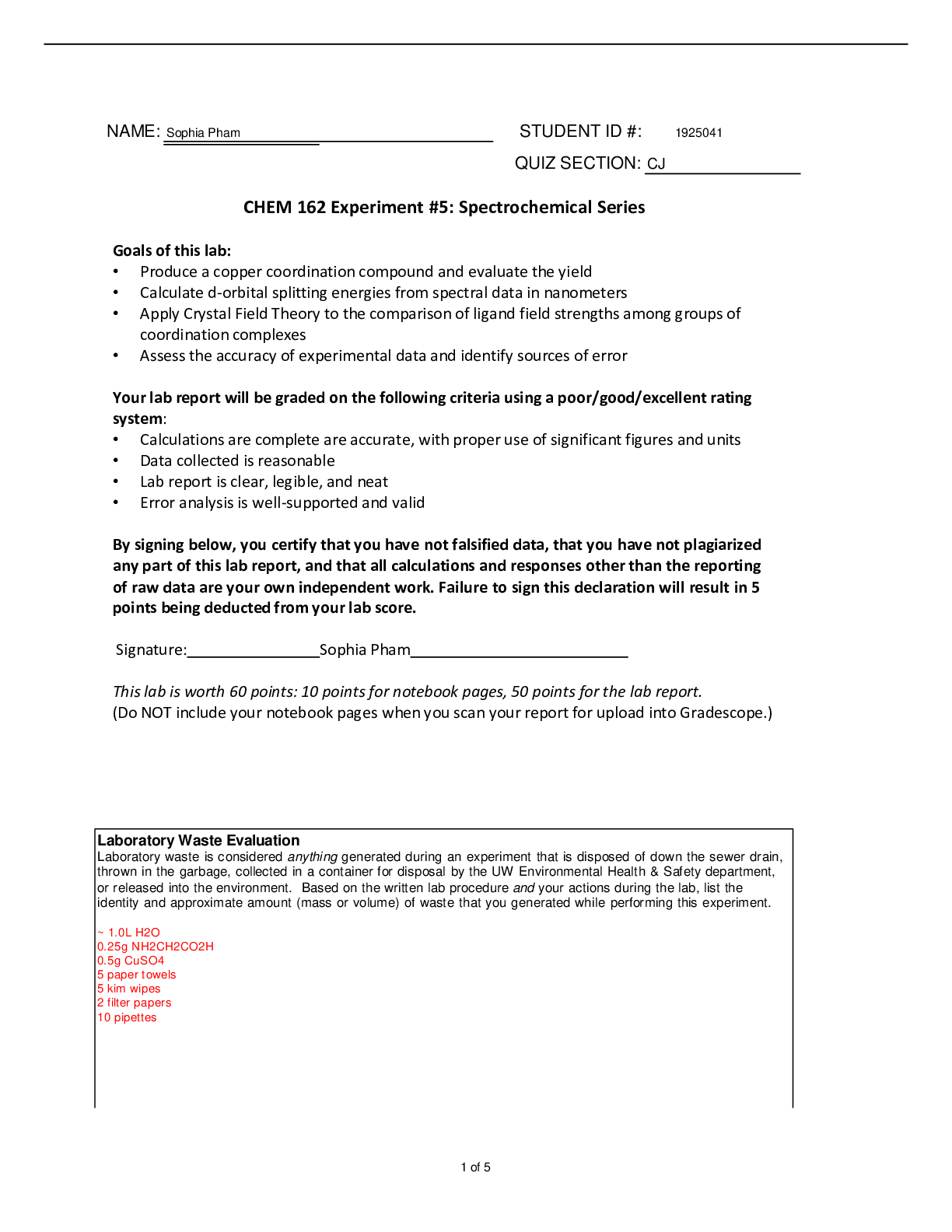Physics > Lab Report > LAB Report for Experiment RC Circuits ( well written report ) 2017 (All)
LAB Report for Experiment RC Circuits ( well written report ) 2017
Document Content and Description Below
Report for Experiment #18 RC Circuits Maia Li Lab Partner: Danielle Pucciarelli TA: Maksim Piskunov June 31, 2017Introduction In this experiment, we set up a simple RC circuit and studied its cu... rrents and voltages and how they changed over time. Using this data, we were able to determine the time constant of the circuit. In investigation 1, we set up an uncharged capacitor, power supply, switch, and resistor in series. Immediately after flipping the switch, we measured the voltage over time – first over the resistor, and then over the capacitor. After plotting these graphs with logarithmic fits, we could calculate the time constant. In investigation 2, we set up a circuit with a switch so that when switched one way, it would charge the capacitor (power supply and a smaller resistor), and switching it the other way would discharge the capacitor (1 kΩ resistor). After fully charging it, we flipped the switch and immediately began to measure the current through the capacitor over time. With these values plotted and fitted, we could find the time constant. Lastly, in investigation 3, we connected two capacitors in series with a resistor, switch, and power supply. Upon closing the switch, we measured the voltage over the resistor, and found that the voltage dropped to 0 nearly instantly. We then set up the two capacitors in parallel, measured the voltage over the resistor over time, and found the new time constant. Ultimately, we learned about the relationship between time and RC circuits – how voltage and current change over a capacitor and resistor as the capacitor charges or discharges. Investigation 1 Set up and Procedure For investigation 1, we used a .1 F capacitor, 1 kΩ resistor, a switch, a power supply, and a multimeter. We connected the components in series, and used the multimeter to more accurately set the power supply to 6V. During this and all future investigations, we kept the multimeter on the automatic setting. We checked to make sure the capacitor was discharged, by connecting it in a loop with a 10Ω resistor. We connected the voltmeter around the resistor for the first part of this investigation We then closed the switch and immediately began counting time. One team member controlled the voltmeter, and the other had the timer and Excel table. We took readings for every 10 seconds over 5 minutes. After gathering our readings, we plotted the voltage over time using a logarithmic fit. The equation of our line helped us calculate the experimental time constant. We then repeated these steps exactly with the voltmeter measuring the voltage over the capacitor. We approximated the error in the time to be .05 seconds, based on our average reaction times. The error in voltage is the inherent error of the multimeter. Figure 1: Circuit diagram of all components in series. [Show More]
Last updated: 1 year ago
Preview 1 out of 14 pages
Instant download
.png)
Instant download
Reviews( 0 )
Document information
Connected school, study & course
About the document
Uploaded On
Jun 15, 2021
Number of pages
14
Written in
Additional information
This document has been written for:
Uploaded
Jun 15, 2021
Downloads
0
Views
37



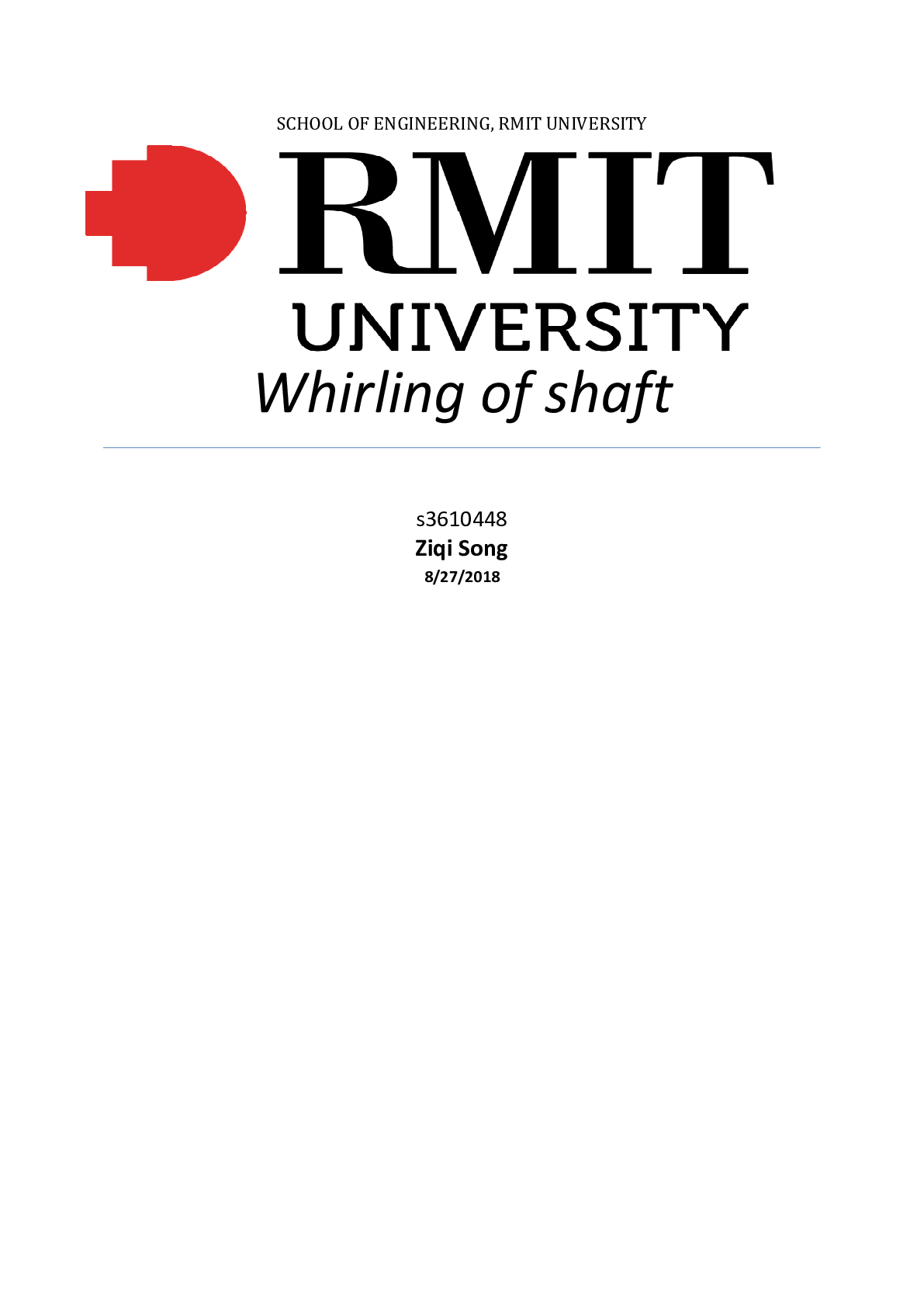
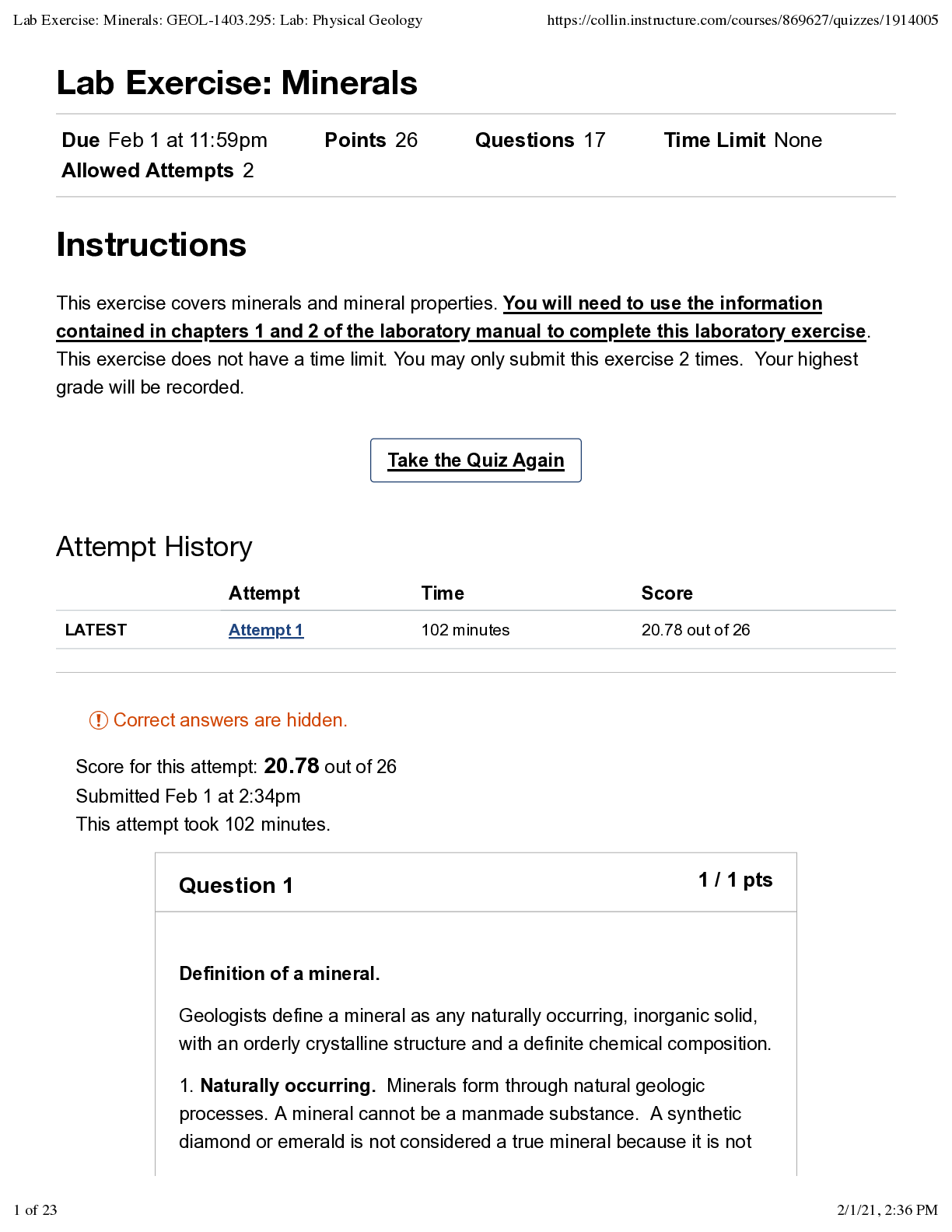


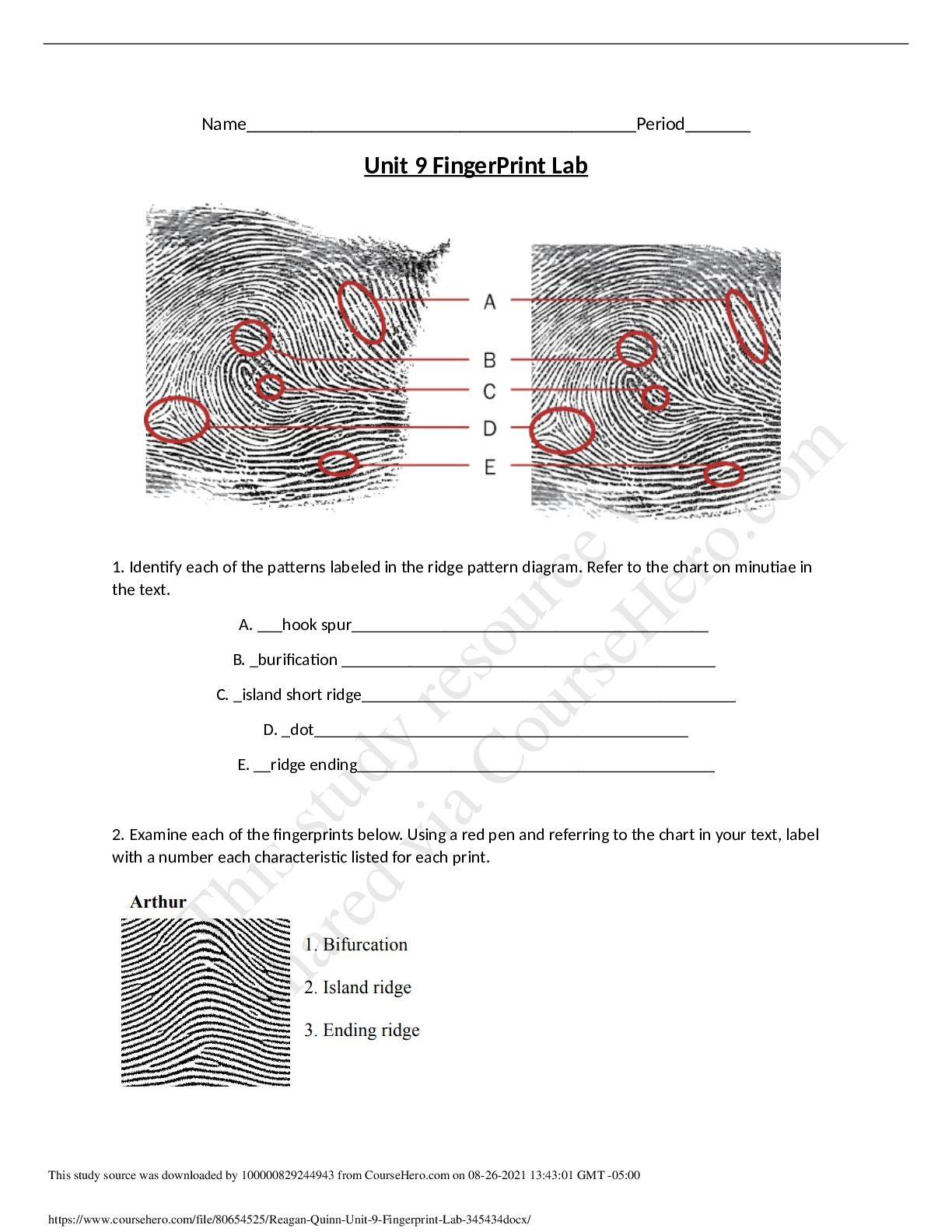




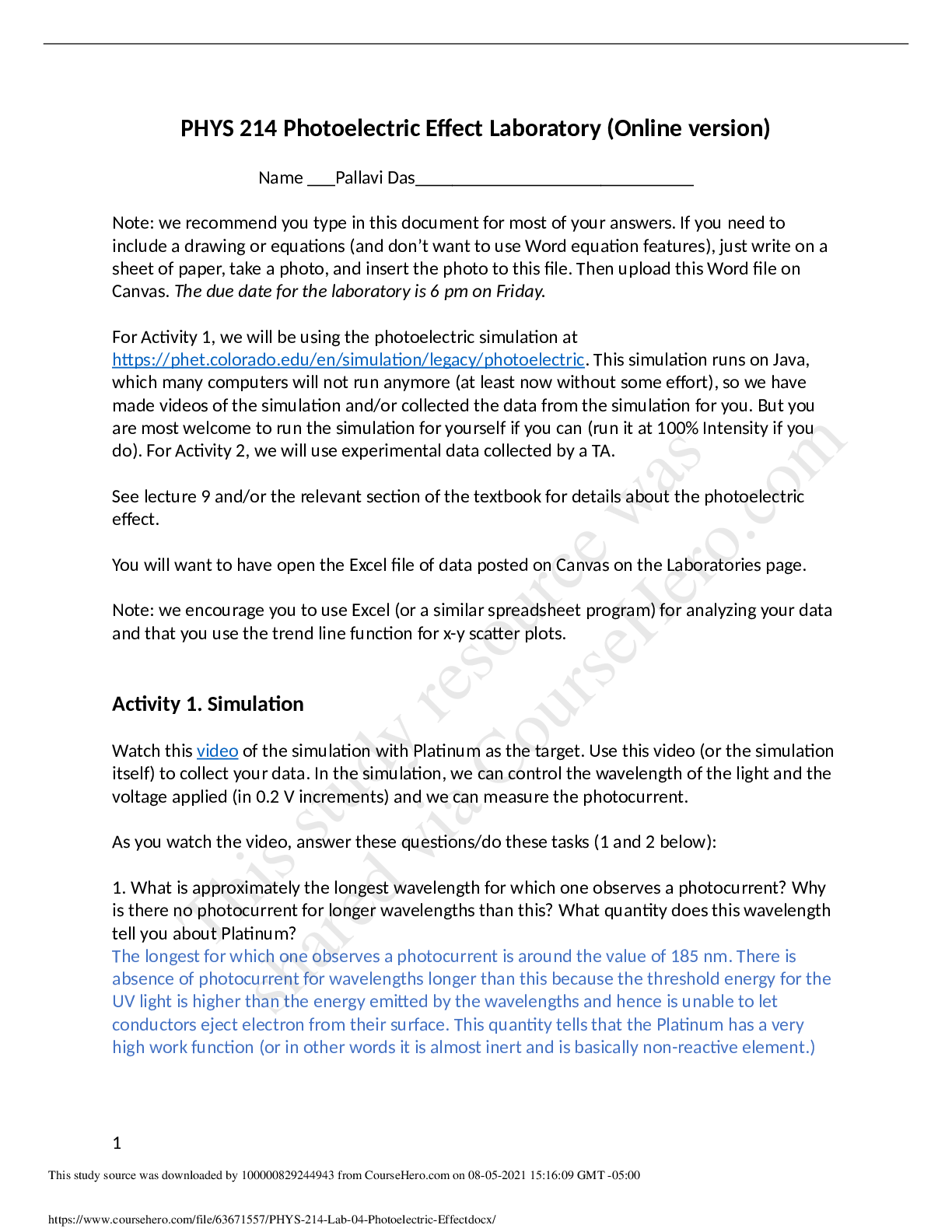

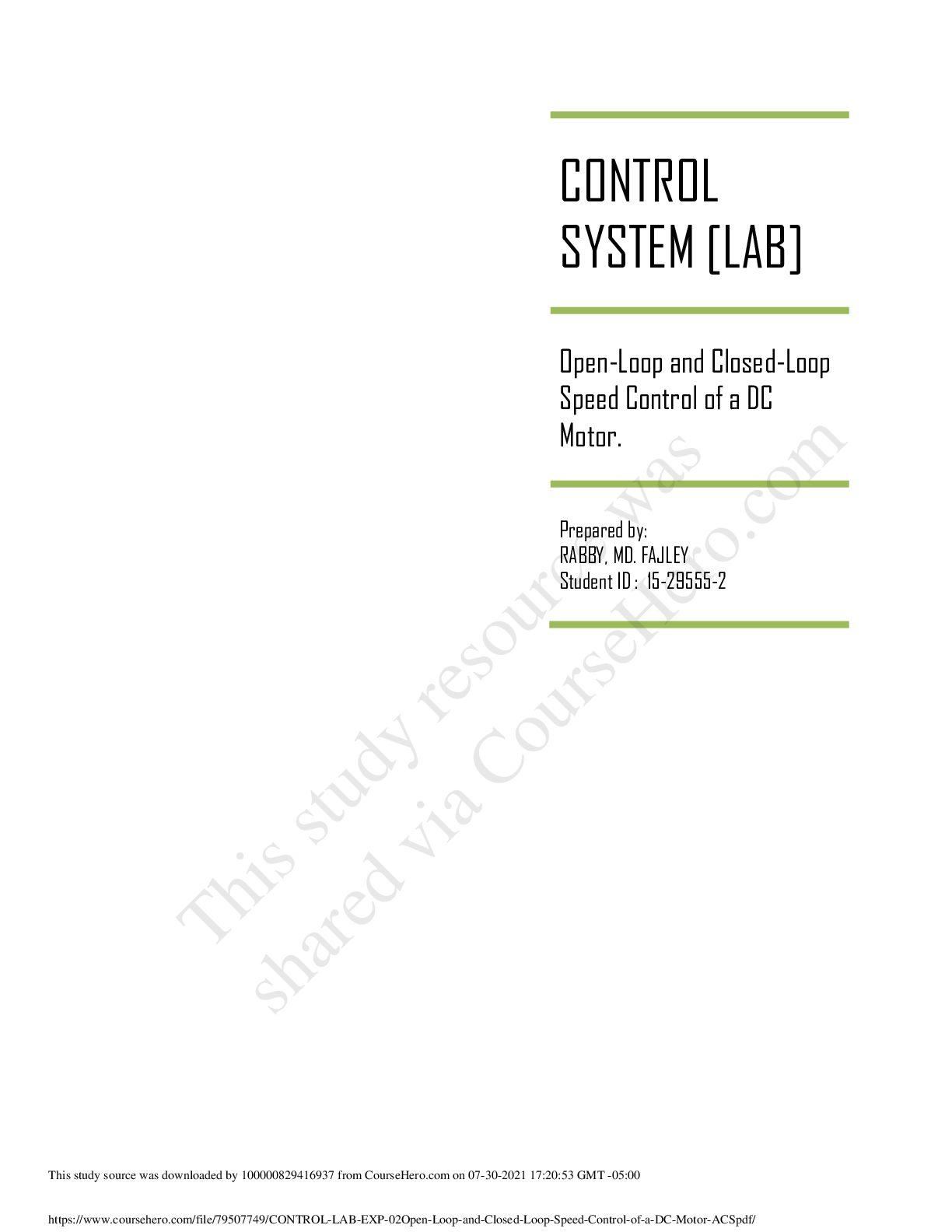



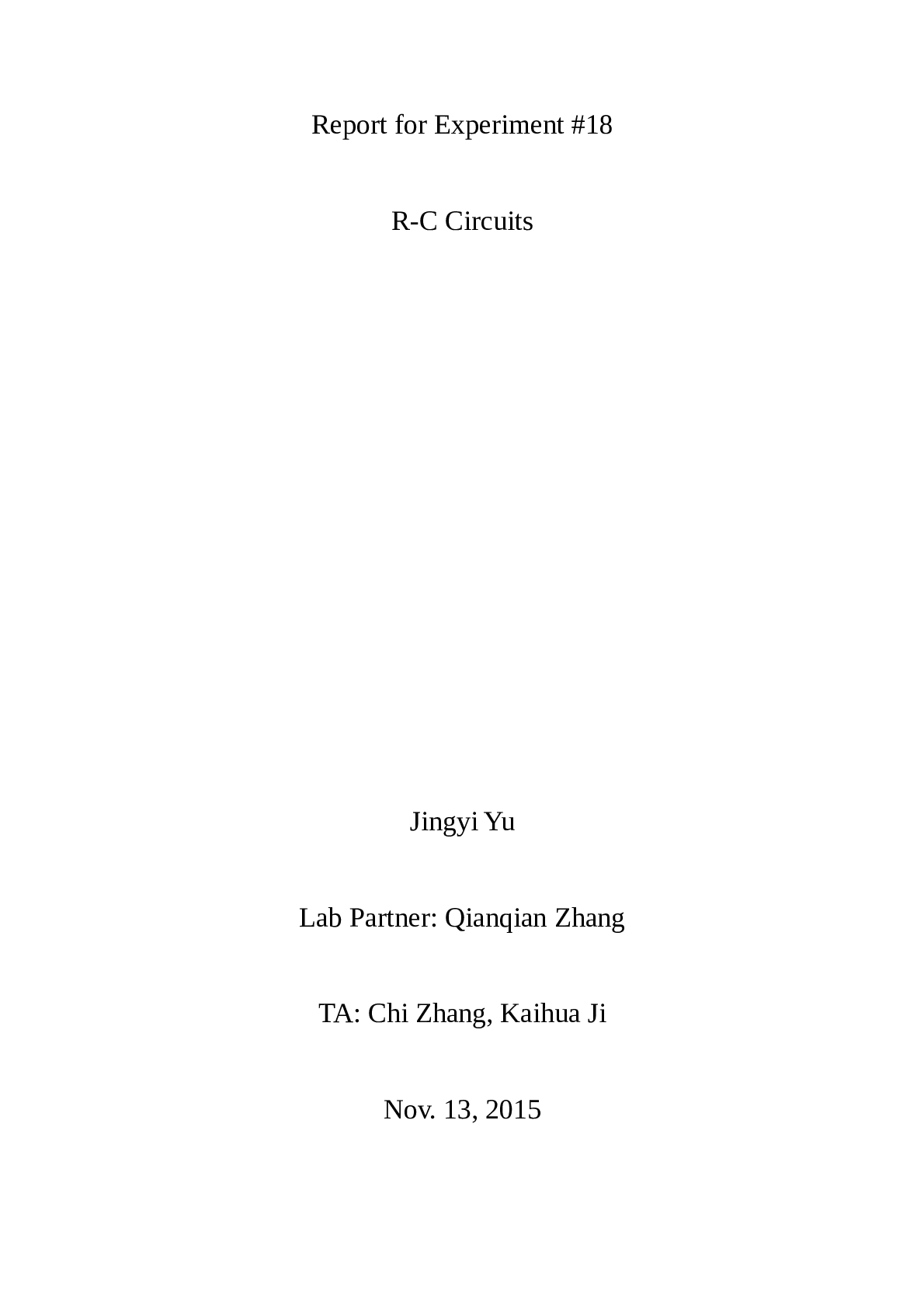

.png)

.png)
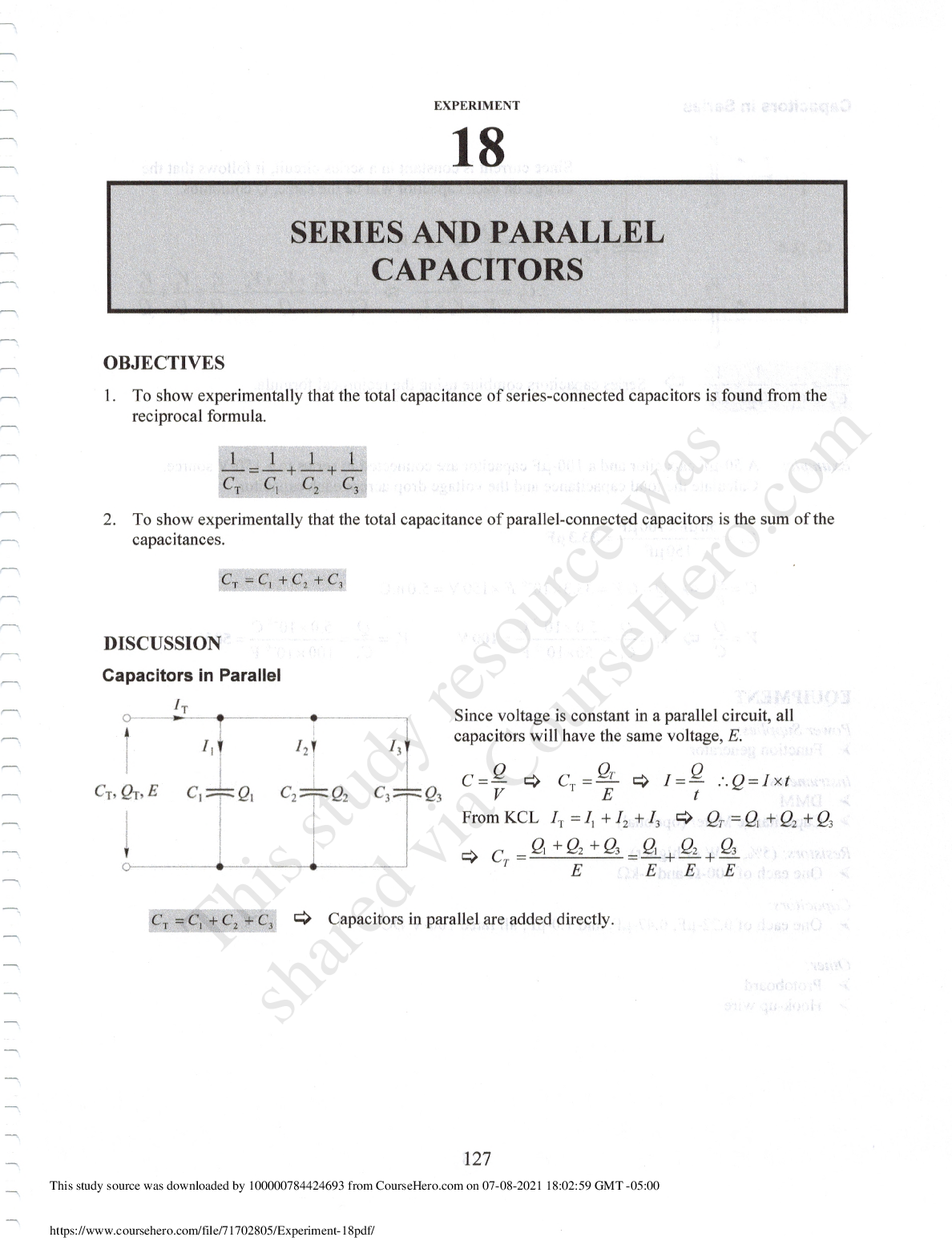



.png)
.png)
.png)
.png)
.png)
.png)

